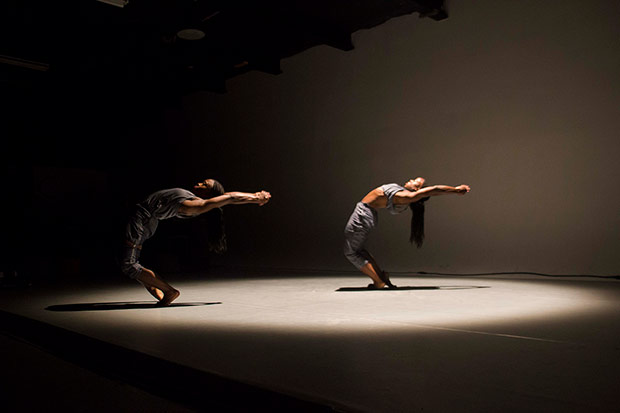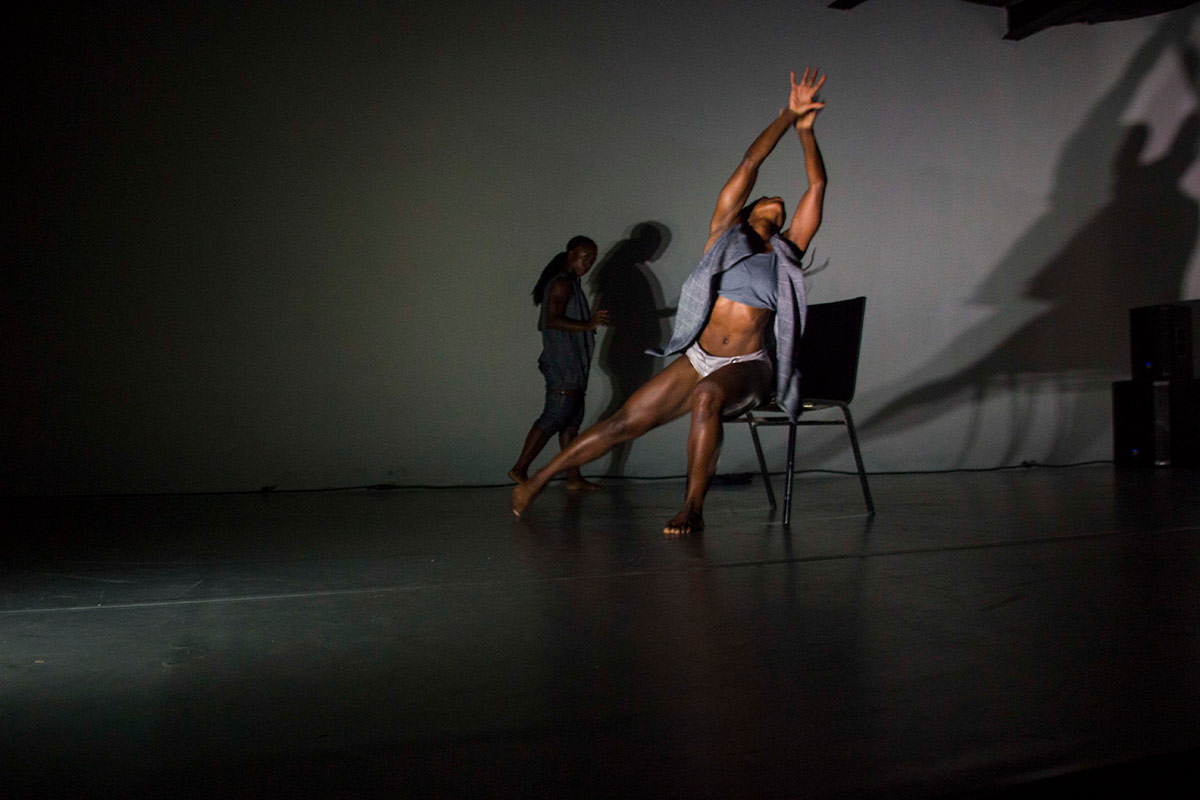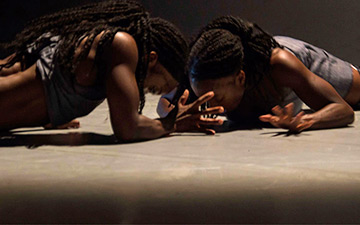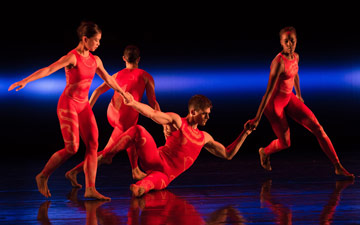
© Driftnote. (Click image for larger version)
dn-game-2-bend-back_1000.jpg
James Finnemore: TERRA
Alleyne Dance: A Night’s Game
★★★✰✰
London, The Place
24 April 2018
www.jamesfinnemore.co.uk
www.alleynedance.com
For some reason, the intended (or, at least, promoted) order of this double bill was reversed and that was a pity. Alleyne Dance’s offering appeared to have the more complicated technical set-up, with a range of floor-based lighting alongside the front row of seats, which may well have caused the abnormally long interval (45 minutes) while it was all de-installed. As a result, it was approaching 10pm when the second work began, which was clearly much later than anticipated and some people had to leave before the end.
Length of programme aside, Alleyne Dance’s A Night’s Game was highly energetic and demandingly compulsive whilst James Finnemore’s TERRA was strategically slower and stealthily hypnotic; a combination of different works that would certainly have worked better in tandem had they been shown in the reverse order.
The Alleyne twins, Kristina and Sadé, deliver dance that demands respect; highly absorbing in a linear journey that nonetheless takes all manner of diversions (some subtle, others coruscating) along the way. They are certainly not identical twins, either in terms of how they look or dance; both having highly individual and complementary styles.
The sisters already have a strong pedigree as emerging contemporary dancers of note with their combined performance experience taking in Akram Khan Company, Wim Vanderkeybus, Arthur Pita and Henri Oguike (amongst many others) and A Night’s Game (their first self-choreographed duet) has been on the road, since 2016, with performances in Austria, Canada, France, Spain as well as sundry venues across the UK. Later this year, the duo will perform in Slovenia, Greece, France and Norway. They are “going places”, in more ways than just by aeroplane, aided by strong support; with Farooq Chaudhry (credited as mentor) and both Dickson Mbi and Mbulelo Ndabeni named as other collaborators.

© Driftnote. (Click image for larger version)
dn-game-2-bend-back_1000.jpg
In a dusky, cloudy room, heavily redolent of confinement, Sadé begins the work, delivering the first of three consecutive solos while seated on a wooden chair. She starts by scraping her arms with her fingertips, progressing to violently slapping her body and then stretching out to the extremity of the kinaesthetic envelope centred on her contact with the chair. It is a sequence that could have become uninteresting, very quickly, but the rich combination of maximum variety of chair-based movement, her personal charisma and the percussive (almost flamenco-like) rhythms of her body-drumming and foot-stamping gave the whole procedure an arresting quality.
When Kristina eventually joins the fray, she initially appears no more than a peripheral player. There is aggression between them: in an impressive coup de theatre, Sadé jumps, unsighted, backwards onto the chair and quickly off again, grabbing and throwing the chair at her twin in a single unbroken action. And, this was a violent, heavy, athletic throw (repeated again, later) that required strength, co-ordination and mutual trust.
Gradually, Kristina began to take over the dominant role, leading to her own stunning solo, full of tortured twists and gymnastic flexibility, captured within a rectangle of light. The complex lighting design (by Lucy Hansom), as described earlier, was an effective contribution, strongly enhancing the athletic power and commanding presence of these impressive dancers. An eclectic musical background – although with titles referencing Prison, Surrender and Carnage – also helped to make the best part of an hour flow by in seamless fascination.

© Danilo Moroni. (Click image for larger version)
TERRA was an altogether different beast. It opened with the four dancers (again, all women) standing in a group, with their gazes uniformly and unwaveringly transfixed on a spot in the “wings”, stage right, as if watching a stationary rodent. There were many such moments of quiet contemplation and stillness, contrasting with sudden bouts of harmonised movement in which the quartet performed with laudable tightness.
The dancers (Tiffany Desplanques, Anne-Charlotte Hubert, Erin O’Reilly and Pauline Raineri) worked well as a group, essentially because of their respective individualities, which were clear from the start. They were dressed in a random assortment of clothes (like individual travellers on a journey, which seemed the intended aim) with their idiosyncrasies tied together through a uniform of the same grey socks.
The narrative theme and choreography gave rise to many more questions than answers. I didn’t discern the intended ‘study of fear’ or the impact of unseen violent acts, forcing the group to ‘become something other than themselves’. Frankly, none of that registered and the impact of Joel Harries’ original, eponymous composition (sometimes reverberating so deeply that you could feel it inside your stomach) was similarly ambiguous.
Although I enjoyed bursts of Finnemore’s choreography, there were other times when it seemed a mechanical slave to the music, comprising predictable, robotic movements in exact synchronicity with the beat. TERRA was disadvantaged by the elongated timing and it certainly suffered in following such a dynamic opener.

















You must be logged in to post a comment.